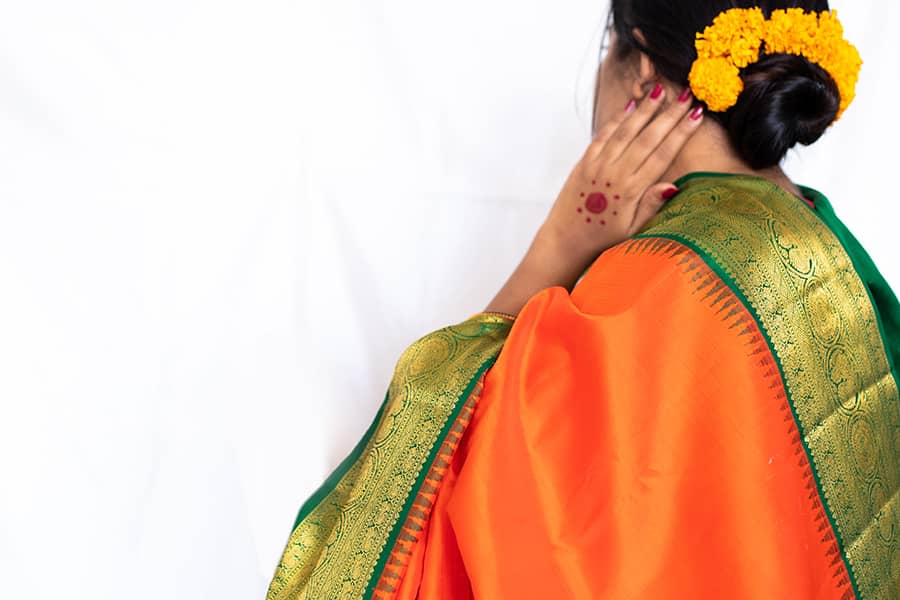Satika
Saree, a drape that has changed several forms, evolved with time, has left a deep-rooted impact on Indian clothing and has become the face of Indian clothing on the world fashion map. As times changed, kingdoms, rulers, occupation, and lifestyle evolved, methods of draping the saree also saw a gradual change according to the needs and necessities of women. But there is one queen, who triumphed and stood the test of time and didn't fail to spread her charm and grace for generations together. She’s the long-reigning queen of silks, the ever graceful Kanjeevaram saree.
Like every other queen, who had her story and journey to power, the Kanjeevaram saree also has its story. A story that takes us 1000 years back in time to an era of the mighty Cholas. Back in those times, Kancheepuram was one of the Chola dynasty’s headquarters, where soldiers from their ”kaikolar army” had settled. The kaikolars or the sengunthars were not only known for their bravery on the battlefield but also their mastery of the craft of weaving. Under the reign of King Raja Raja Chola 1, the kaikolars achieved great heights in battles on the field and the craft of weaving, off-field.
Ever since then, the art of weaving fine silk drapes became the identity of the people and the place. But did women back then, drape it the same way as we do? The answer is, no.
The 20th-century style of draping, which most Indian women of today’s times call a normal saree, was invented by gyanodanandini or jnananandini Debi, sister in law of Rabindranath Tagore. Her journey from Calcutta to Bombay and various other British presidencies lead to the invention of the pleated saree, and the concept of pairing it with a blouse. Gyanoda Debi invented this style by blending the Parsi and Bengali way of draping the saree and styled it like the British women with a fitted puff-sleeve blouse, and thus began the legacy of the saree, we and everyone around us are familiar with. While wearing clothes or draping sarees, we seldom don’t think about how knowingly or unknowingly it became an integral part of our lives, nor do we question how it prevails in our culture. Little did we know that the simple saree, our mothers and grandmother wore had so much history attached to it and is a beautiful amalgamation of several cultures and traditions. And this cycle doesn’t stop, like the unstoppable river that flows through mountains, lands, forests, and cities, the journey of saree is never-ending, neither is our love for the classic Kanjeevaram that is safely tucked in our almaris right now.


